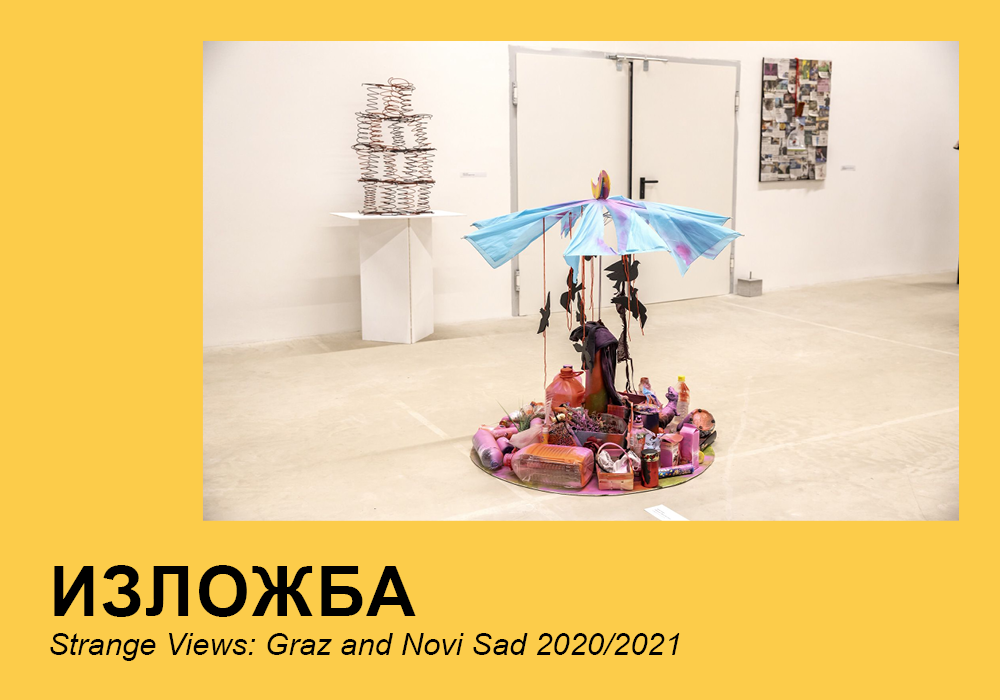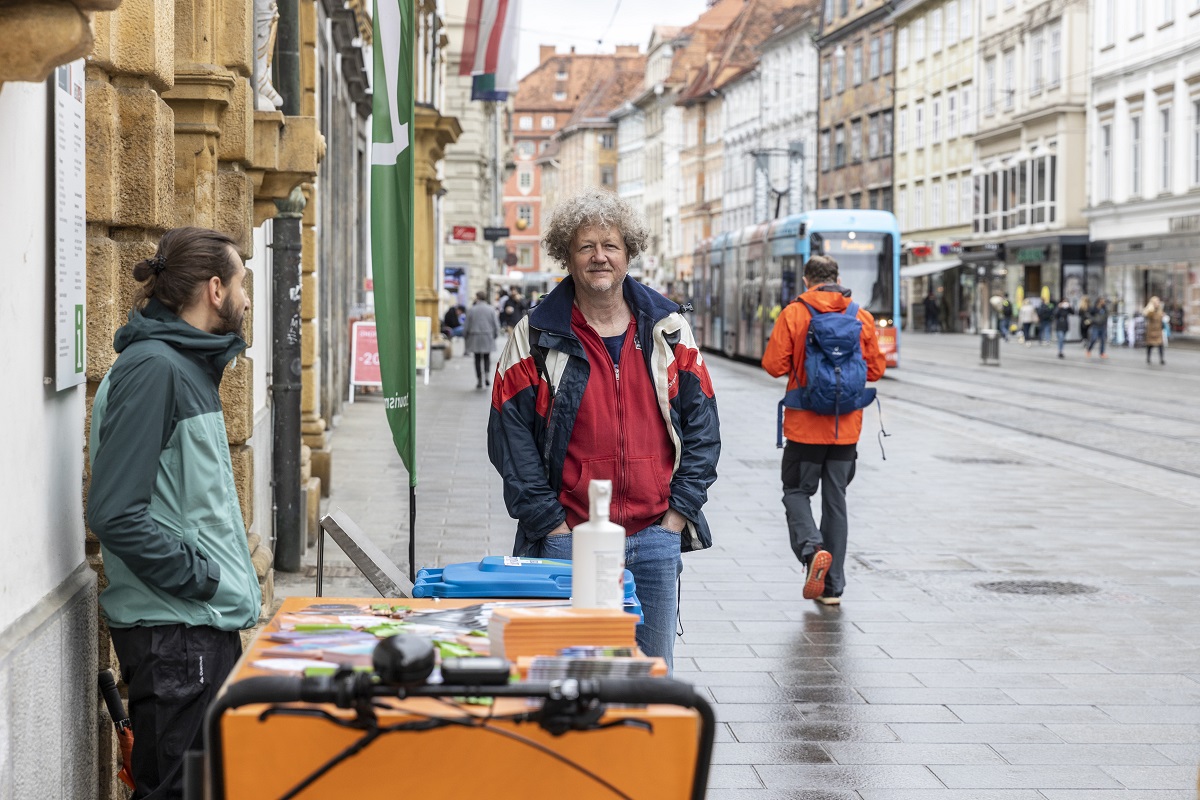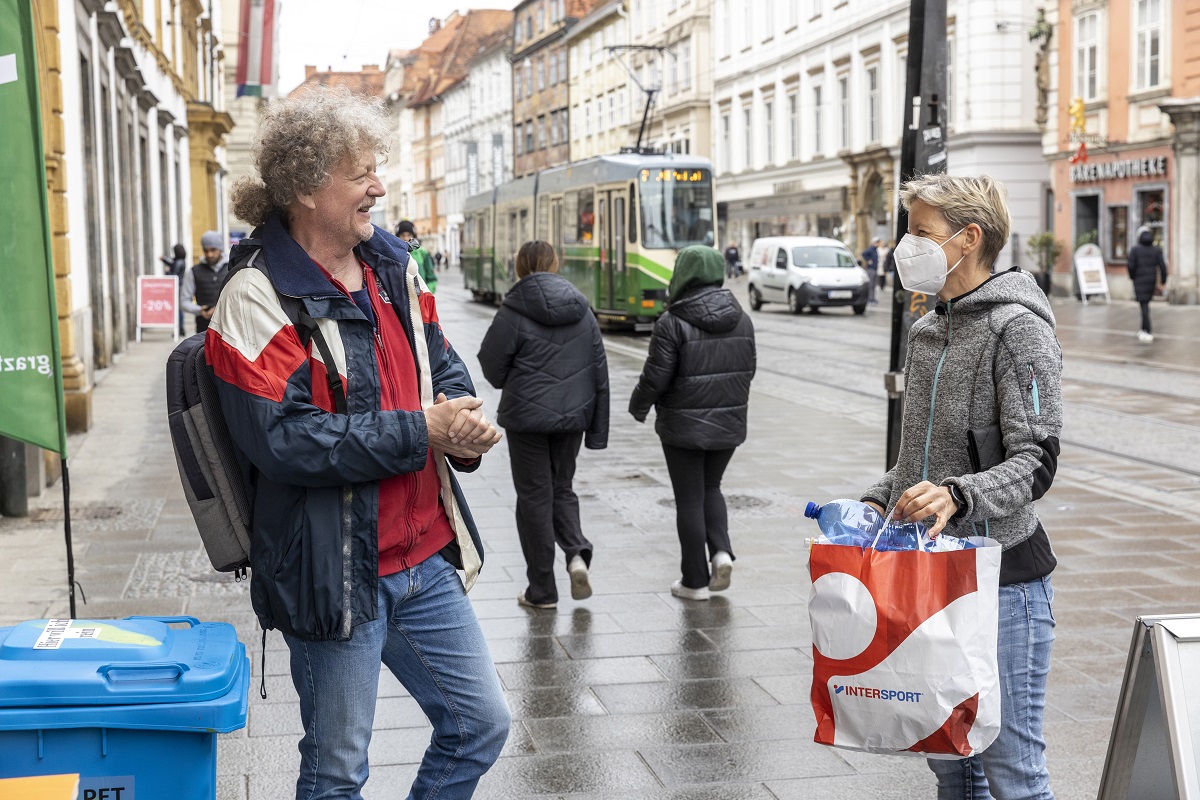The COVID-19 pandemic stopped the whole world for a year, but there is no break when it comes to ecological crisis and environmental protection, topics that never seem to be more popular, thus being the focus of the ‘Strange Views: Graz and Novi Sad 2020/2021’ exhibition which will be opened in the Svilara Cultural Station today, 16 June at 6 p.m., while it will last until 25 June.

The exhibition is a result of cooperation between more than 20 Serbian and Austrian artists, i.e., SULUV (Association of Fine Artists of Vojvodina) and BVBK (Berufsvereinigung der bildenden Künstler Österreichs). Artists wanted to draw the public attention to global environmental degradation and climate changes, as well as to encourage social changes with art, by collecting waste which they turned into installations through the exchange of creative reflection, work, photographs, and videos from Graz to Novi Sad and vice versa.
‘The situations in Austria and Serbia are different. At first, you will not see a lot of garbage out in the streets and in nature, but we are far from perfect. The awareness of ecological problems has increased. Actually, a lot of art projects deal with the current problems of environmental pollution and climate crisis,’ said Armin W. Nimra-Ruckerbauer, president of the Association of Visual Artists Styria – Berufsvereinigung der bildenden Künstler Österreichs and curator of the exhibition.

As a society, how much are we aware of the bad condition of the environment?
Many things are changing at the moment, but discussion about facing these problems has already started. But there is still a lot of work to be done.
Is the recycling, upon which the ‘Strange Views: Graz and Novi Sad 2020/2021’ exhibition itself is based, a solution for the future of our environment?
Recycling is certainly an important part. However, we should really change our habits, for example, throwing plastic.
The exhibition emerged during pandemic, in 2020/2021. Artists had a hard time working during the whole period, what is your impression of this? How did you manage? How did you work and create, and to what extent?
We had to change the concept, some project parts had to be cancelled, while some events were delayed. A very important part of the project is the cooperation between Austrian and Serbian artists. The idea was to meet and work on joint visions, which was impossible in the end, having in mind that travel restrictions were in force for so long. The idea to exchange the instructions for artistic ideas from 2019 worked during the isolation completely by coincidence. In the end, it turned out to be the perfect way to maintain contact.
The cooperation between Serbian and Austrian artists began in 2017, within the ‘Strange Views’ project. The cooperation implies collective exhibitions and the exchange of artists. What do you think of the cooperation? Has a bridge been built between Serbia and Austria?
Yes, absolutely. Hopefully, it will not end with this project. The cooperation helped both sides to continue the work during pandemic. The bridge between Austria and Serbia became powerful and strong. The cultural project deepened the exchange between organisations and artists, both in Austria and Serbia.
What is it that connects Serbian and Austrian cultures?
There are many different things that emerge from our joint historical and cultural heritage. But the fact that we do not work within a big institution plays an important role as well. I guess that the independent cultural scene in Serbia also faces similar problems and challenges.
Is there a similarity regarding the work of Serbian and Austrian artists, specifically their work within the ‘Strange Views: Graz and Novi Sad 2020/2021’ exhibition? Is there a similarity in the artistic expression of both sides, and what is unique to each side?
It is interesting to see that there is a lot of common artistic positions. I guess that we are not so different when it comes to it. Novi Sad artists have had many great ideas. The cooperation was not always easy due to the struggle with coronavirus, but we hope that this turned out to be a good cooperation. Within the art cooperation regarding the global issue, we had a chance to see how Serbian and Austrian cultures are closely connected. When it comes to differences, there only a few of them. These are world-class artists.

Next year, Novi Sad will bear the European Capital of Culture title. How do you perceive Novi Sad? Can you find some European values in the art and culture of Novi Sad?
Novi Sad is on a good way and a lot has changed in a positive way. Novi Sad got closer to Europe without losing its own identity.
Graz also wore the title of European Capital of Culture. Apart from the title, what else connects Novi Sad and Graz?
We have a lot of things in common. Graz and Novi Sad are both middle-sized cities with universities and young population. Both cities have active cultural life, but also the same problems when it comes to the infrastructure of independent cultural scene. The year when Graz won the European Capital of Culture title in 2003 was amazing. There were really a lot of great cultural projects. After 2004, many projects were stopped, and we could not continue the work. We hope that the situation in Novi Sad will be better! We hope you will manage to keep up the work after the title year. Both cities have to face the challenges of time and similar problems with the aim of creating a ‘smarter city’ for everyone.
The exhibition is part of the long-term cooperation between SULUV and BVBK associations from Serbia and Austria, which has included joint exhibitions and artists’ exchange for years, while this time, the ‘arTTension’ organisation from Graz and Austria Cultural Forum joined the project.
